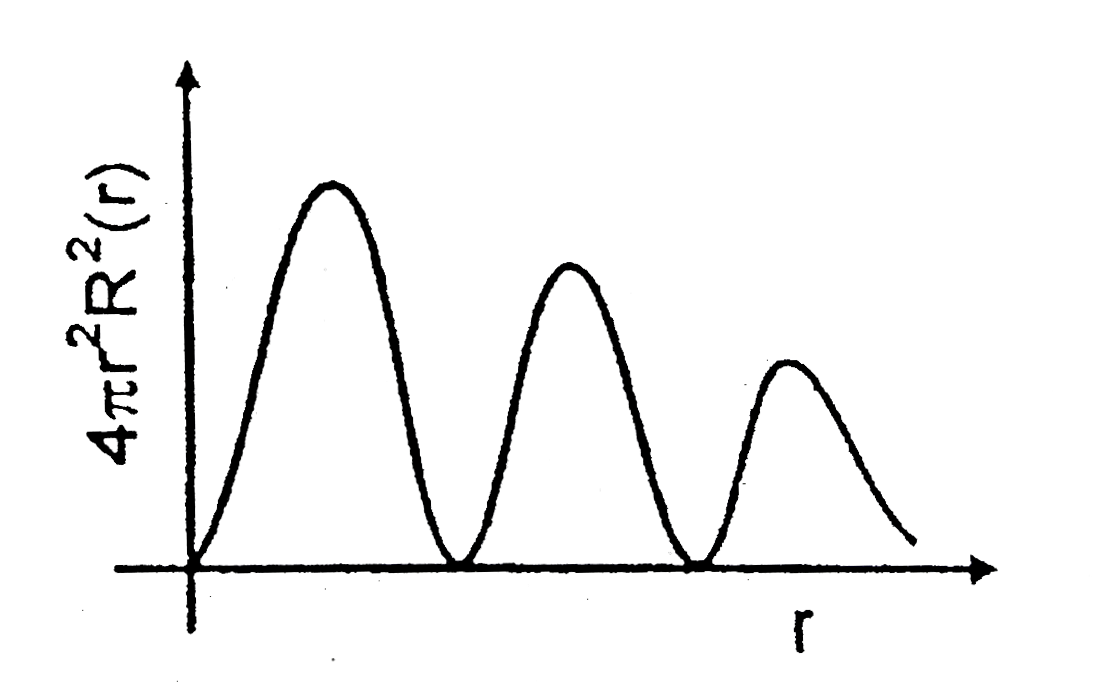For a 3s - orbital, value of Ψ is given by following realation:
Ψ(3s)=19√3(1a0)3/2(6−6σ+σ2)e−σ/2, where σ=2r.Z3a0
What is the maximum radial distance of node from nucleus?Solution in Telugu
Step by step video solution for For a 3s - orbital, value of Psi is given by following realation: Psi(3s)=(1)/(9sqrt(3))((1)/(a_(0)))^(3//2)(6-6sigma+sigma^(2))e^(-sigma//2)," where " sigma=(2r.Z)/(3a_(0)) What is the maximum radial distance of node from nucleus? by Chemistry experts to help you in doubts & scoring excellent marks in Class 11 exams.
Updated on:21/07/2023Topper's Solved these Questions
Similar Questions
For similar orbitals having different values of n:
View SolutionA small particle of mass m moves in such a way that the potential energy U = ar2 where a is a constant and r is the distance of the particle from the origin. Assuming Bohr's model of quantization of angular momentum and circular orbits, find the radius of nth allowed orbit.
View SolutionCalculate ΔrG for the reaction at 27∘C
H2(g)+2Ag+(aq)⇔2Ag(s)+2H+(aq)
Given : PH2=0.5 bar, [Ag+]=10−5M,
[H+]=10−3M,ΔrG∘[Ag+(aq)]=77.1kJ/mol
View SolutionFor an orbital in B+4 radial function is :
R(r)=19√6(za0)34(4−σ)σe−σ/2
where σ=Zra0 and a0=0.529Å,Z = atomic number, r= radial distance from nucleus.
The radial node of orbital is at distance from nucleous.
View SolutionQuestion : Is the orbital of hydrogen atom 3px ?
STATE 1 : The radial function of the orbital is R(r)=19√6a3/20(4−σ)σe−σ/2,σ=r2
STATE 2 : The orbital has 1 radial node &0 angular node.
View SolutionFor a 3s-orbital
Φ(3s)=1a√3(1a0)3/2(6−6σ+σ2)∈−σ/2
where σ=2rZ3aσ
What is the maximum radial distance of node from nucleus?
View SolutionGiven the H−atom Rn,l=19√3(1ao)3/2(6−6σ+σ2)e−σ/2
where σ=2Zrnao,ao=0.53Å
Select the correct statement for the given orbital ?

View SolutionThe Schrodinger wave equation for hydrogen atom of 4s- orbital is given by :
Ψ(r)=116√4(1a0)3/2[(σ2−1)(σ2−8σ+12)]e−σ/2 where a0=1st Bohr radius and σ=2ra0 . The distance from the nucleus where there will be no radial node will be :
View SolutionThe wave function of 3s and 3pz orbitals are given by :
Ψ3s=19√3(14π)1/2(Zσ0)3/2(6=6σ+σ)e−σ/2
Ψ3sz=19√6(34π)1/2(Zσ0)3/2(4−σ)σe−σ/2cos0,
σ=2Zrnα0
whereα0=1st Bohr radius , Z= charge number of nucleus, r= distance from nucleus.
From this we can conclude:
View SolutionCalcuted the distance of spherical nodes for '3s' orbital from nucleus ?
R3s=19√3a3/20(6−6σ+σ2)eσ2 Where σ=2rna0
View SolutionThe Schrodinger wave equation for hydrogen atom is
Ψ(radial)=116√4(Za0)3/2[(σ−1)(σ2−8σ+12)]e−σ/2
where a0 and Z are the constant in which anwer can be expressed and σ=2Zra0
minimum and maximum position of radial nodes from nucleus are .... respectively.
View SolutionFor a 3s - orbital, value of Φ is given by following realation:
Ψ(3s)=19√3(1a0)3/2(6−6σ+σ2)e−σ/2, where σ=2r.Z3a0
What is the maximum radial distance of node from nucleus?
View SolutionThe radial wave equation for hydrogen of radial nodes from nucleus are:
Ψ1s=116√4(1a0)3/2[(x−1)(x2−8x+12)]e−x/2
where, x=2r/a0,a0 = radius of first Bohr orbit
The minimum and maximum position of radial nodes from nucleus are:
View Solution[" The distance of spherical nodes "],[" from nucleus for the given orbital "],[" are "],[qquad [psi_(" radial ")=(1)/(9sqrt(2))((Z)/(a_(0)))^(3/2)[(sigma^(2)-4 sigma+3)]exp(-sigma/2],[" where "a_(0)&Z" are the constants and "],[sigma=(2Zr)/(a_(0))]]
View SolutionThe Schrodinger wave equation for hydrogen atom is
Ψ(radial)=116√4(Za0)3/2[(σ−1)(σ2−8σ+12)]e−σ/2
where a0 and Z are the constant in which anwer can be expressed and σ=2Zra0
minimum and maximum position of radial nodes from nucleus are .... respectively.
View SolutionFor a 3s - orbital, value of Phi is given by following realation: Psi(3s)=(1)/(9sqrt(3))((1)/(a_(0)))^(3//2)(6-6sigma+sigma^(2))e^(-sigma//2)," where " sigma=(2r.Z)/(3a_(0)) What is the maximum radial distance of node from nucleus?
View Solution
